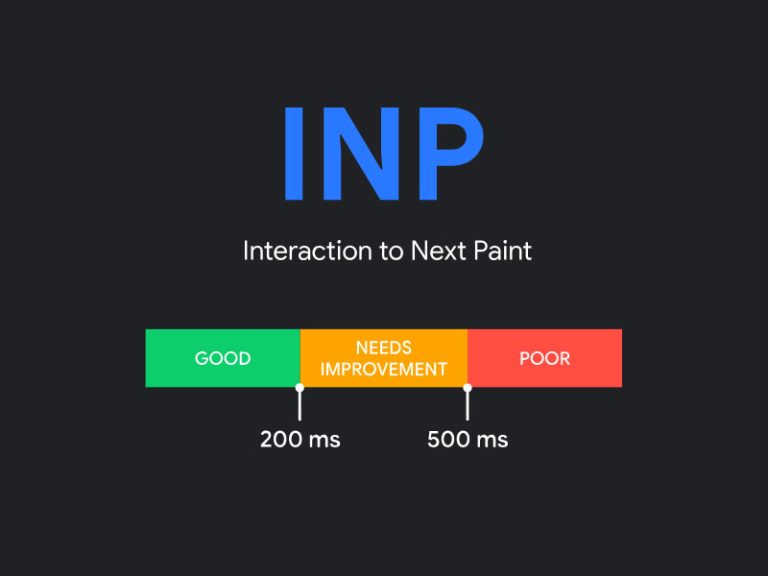
How to Improve Input Delay with Interaction to Next Paint (INP)
Input Delay (INP) is a critical metric that gauges how responsive a web page is to user interactions.
This feature will be available in 2024 and as a digital marketing agency, we must stay up-to-date with the upcoming features.
A low INP score translates to a smoother and more enjoyable browsing experience, while a high score indicates potential frustrations for users.
Here are some effective strategies to improve your page’s INP score and provide a better user experience:
Reduce JavaScript Execution Time
JavaScript is a powerful language used extensively in web design and development, but its execution time can significantly impact your website load speed including INP. To minimize this, consider the following techniques:
Code Optimization: Optimize your JavaScript code to make it more efficient and streamlined. Minify your code and remove any unnecessary operations to reduce execution time.
Use Web Workers: Offload time-consuming JavaScript tasks to web workers. Web workers run in the background, independent of the main execution thread, allowing the page to remain responsive during heavy calculations.
Break Up Long Tasks: Lengthy JavaScript tasks can delay user interactions. Break them into smaller, manageable chunks using techniques like asynchronous programming or requestAnimationFrame API to spread the processing across frames.
Avoid Large, Complex Layouts:
The complexity of page layouts can significantly impact rendering time and consequently, the INP score. Simplify your layouts by:
Using Fewer Elements: Minimize the number of elements on your page. Each element requires rendering and processing time, so keeping it lean can improve INP.
Utilizing CSS for Layout: Rely on Cascading Style Sheets (CSS) to manage your content’s layout. CSS can handle positioning, alignment, and resizing, reducing the reliance on complex rendering calculations.
Be Mindful of Interaction Overlap:
User interactions that overlap with the page’s rendering process can lead to input delay. To avoid this:
Opt for Optimized Animations: Ensure any animations or transitions are optimized and utilize hardware acceleration, where possible. This allows smooth animation rendering without causing input delay.
Implement Debouncing and Throttling: Use these techniques to control the frequency of event triggering, preventing rapid successive interactions that can interfere with the page’s rendering.
What is a Good INP Score?
A good INP score is below 200 milliseconds. This indicates a highly responsive page, delivering a seamless user experience.
A score ranging between 200 and 500 milliseconds is still acceptable, but it’s worth striving to improve it further.
An INP score exceeding 500 milliseconds is considered poor and requires immediate attention to optimize performance.
Conclusion
Improving Input Delay (INP) is crucial to ensure that users have a smooth and interactive experience while browsing your website.
By reducing JavaScript execution time, simplifying layouts, and avoiding interaction overlap, you can effectively enhance your page’s INP score.
Remember that a better INP score leads to higher user satisfaction, increased engagement, and potentially improved search engine rankings.
Therefore, always try to structure the code in your event callbacks, Avoid forced synchronous layout (layout thrashing) and Minimize DOM size as a rule of thumb.
Implementing these web design and development techniques will not only optimize your website’s performance but also ensure a positive user experience for your visitors.
If you need help ensuring your website covers these areas, please feel free to talk to our digital marketing team at HypeX.


